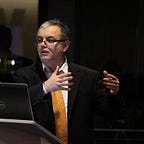Whence Political Theory? Modernity and Nature
Political theorists have long grappled with “nature” to explain the making, transformation, and destruction of human polities. Aristotle connected his Politics to his Meteorology. Scholasticism drew on Aristotelian physics and meteorology to offer exacting definitions of natural law. Lockean liberalism and Rousseauian republicanism had “Nature” at the very heart of theories of the origins of rights and property. Humboldt’s writings were more than about a science of a globally networked nature. They were also a Kantian theory of the interactions of humans with the landscapes to produce scientific, aesthetic, political, sociological, and cultural knowledge. Nineteenth-century European political theory was a sustained engagement with Spinoza’s theories of nature (as well as Darwin’s natural selection). Caraccioli turns to the “natural histories” of five sixteenth-century Spanish writers in the Indies (Oviedo, Las Casas, Sahagún, Hernández, and Acosta) to add Iberians in America to the roster of modern naturalists-cum-political scientist.
Caraccioli calls attention to theories produced outside Renaissance Europe. He argues that the New World produced theories of empire and nature that later became normative via Bacon and the Scientific Revolution. Caraccioli forcefully concludes that the first recognizable modern theories of nature and the political emerged in the sixteenth-century Spanish Empire, not England in the seventeenth (Hobbes and Locke) or France in the Enlightenment (Rousseau). Caraccioli does not see the religiosity of his writers as antithetical to modernity. Political theories that center on nature’s agency, he argues, did not need to be secular to be modern. Finally, Caraccioli finds political theory ought not to be found only as an explicit theoretical reflection. Political theory is built into story-telling and narrative structures (thus the title: Writing the New World).
According to Caraccioli, 16th-century Iberian natural histories of the New World were organized on the narrative structure of the Reconquista, namely, an epic plot pitting two religious foes over control of the land and sovereignty. In this chivalric-epic structure, nature represents more than the staging where the battle between Faith and Heresy or Satan and God unfolds. In the Reconquista narratives, Nature itself has agency, encouraging heresy-temptation, utopian moral perfection, or demonological extirpation.
According to Caraccioli, Oviedo wrote a painstaking empirically driven chronicle of conquest (as eyewitnesses) while introducing at every turn descriptions of the marvels of nature in an unknown New World. His nature was potentially corrupting as much as tantalizingly novel. It held the promise of new beginnings and a new society. Yet this unveiling of nature could not be severed from the hardships of conquest. For Las Casas, on the other hand, New World’s nature was utopianly temperate and benign. Such a natural world had produced morally and spiritually superior societies of all types (either “natural” man or pagan civilizations). The conquest was therefore the process of destruction not only of peoples but of Nature’s sanctuary as well.
Sahagun’s Florentine Codex, Caraccioli argues, was not an empirically driven chronicle of conquest but an encyclopedia that sought to catalog all cultural terms associated with Aztec knowledge of deities, cosmos, nature, society, trades, and history. The underlying motivating structure of this encyclopedia, however, was also an epic of Satanic extirpation. Caraccioli finds in Sahagun a “bifurcated” (or deeply contradictory) political logic. The pursuit of extirpation fueled knowledge gathering that encouraged, in turn, indigenous participation. As more knowledge accumulated and more philological detail was gathered, the greater became the respect for the moral, political, and technical accomplishments of the Nahua. Sahagun and his indigenous collaborators moved from the logic of the epic of conquest to a logic of recognition of indigenous epistemological authority.
Hernández also produced empirical, secular knowledge of nature as he was sent by Philip II to expand empirical knowledge of herbals for the royal pharmacy. According to Caraccioli, Hernández moved from an extractive experimental narrative of nature to one philosophical. The crown and local authorities, Caraccioli argues, did not support this shift and withdrew support from Hernandez, keeping his large illustrated natural history from publication.
Acosta, Caraccioli maintains, was part of a similar shift (from natural history to natural philosophy) as the Jesuit became interested in the interpretation of all the new marvels of an unknown “New World.” Caraccioli takes issue with reductive readings of Acosta as anticipating Bacon’s instrumental interpretation of natural philosophy. Whereas Bacon used the Spanish conquest as a metaphor of “discovery,” Acosta saw New World nature as a source of religious inspiration and marvelous contemplation, not just conquest, subordination, and extraction
For Caraccioli these narratives were strikingly modern despite the religiosity of their authors. According to Caraccioli, these narratives deserve an airing in the age of the Anthropocene. It is in the ‘bifurcations” and contradictions of Spanish narratives of nature that their postcolonial liberating potential lies.
Caraccioli’s efforts to find political “theory” buried deep in the structural narrative of texts are methodologically illuminating. His readings of Oviedo, Las Casas, Sahagun, Hernandez, and Acosta as modern political theorists of nature and society, however, are more difficult to digest. I rather we entirely jettison the category of modernity than contort ourselves into finding all sorts of unrecognized modernities (arrested, failed, or alternative) in colonial Spanish America.
